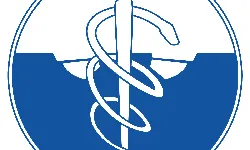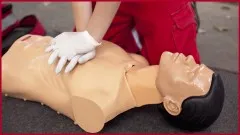
Medical Emergencies: CPR Toxicology and Wilderness 
This course provides an online medical emergencies training to help you develop the knowledge and skills to assess and stabilize certain types of patients for transport. You will learn to identify signs and symptoms of shock, cardiac arrest, drug abuse, toxicologic ingestion, and environmental emergencies. You will also learn to think critically about the complaint and symptoms associated with the gastrointestinal track, renal system, and the reproductive system. By the end of this course, you will be able to assess and stabilize patients for transport. ▼
ADVERTISEMENT
Course Feature
![]() Cost:
Cost:
Free
![]() Provider:
Provider:
Coursera
![]() Certificate:
Certificate:
Paid Certification
![]() Language:
Language:
English
![]() Start Date:
Start Date:
29th May, 2023
Course Overview
❗The content presented here is sourced directly from Coursera platform. For comprehensive course details, including enrollment information, simply click on the 'Go to class' link on our website.
Updated in [May 25th, 2023]
This course provides an overview of medical emergencies, including CPR, toxicology, and wilderness. Participants will learn to identify signs and symptoms associated with shock, cardiac arrest, drug and toxicological ingestion, and environmental emergencies. They will also develop the skills to assess and stabilize patients for transport, including those who are violent. Additionally, participants will gain an understanding of the patient's story and be able to think critically about the complaint and symptoms associated with the gastrointestinal track, renal system, and the reproductive system. By the end of the course, participants will have the knowledge and skills to assess and stabilize certain types of patients for transport.
[Applications]
Upon completion of this course, participants can apply their knowledge and skills to assess and stabilize patients in medical emergencies, such as shock, cardiac arrest, toxicology, and wilderness. They can also use their understanding of environmental emergencies to assess and stabilize patients for transport. Additionally, they can use their critical thinking skills to assess patients with gastrointestinal, renal, and reproductive system complaints.
[Career Paths]
1. Emergency Medical Technician (EMT): EMTs are responsible for providing medical care to patients in emergency situations. They are trained to assess and stabilize patients for transport to a medical facility. EMTs must be able to recognize signs and symptoms of shock, cardiac arrest, drug and toxicological ingestion, and environmental emergencies. They must also be able to provide high-performance CPR, use an AED, and provide oxygenation. The demand for EMTs is expected to grow due to an aging population and an increase in medical emergencies.
2. Paramedic: Paramedics are responsible for providing advanced medical care to patients in emergency situations. They are trained to assess and stabilize patients for transport to a medical facility. Paramedics must be able to recognize signs and symptoms of shock, cardiac arrest, drug and toxicological ingestion, and environmental emergencies. They must also be able to provide high-performance CPR, use an AED, and provide oxygenation. In addition, they must be able to administer medications, interpret electrocardiograms, and perform advanced airway management. The demand for paramedics is expected to grow due to an aging population and an increase in medical emergencies.
3. Emergency Room Nurse: Emergency room nurses are responsible for providing medical care to patients in emergency situations. They are trained to assess and stabilize patients for transport to a medical facility. Emergency room nurses must be able to recognize signs and symptoms of shock, cardiac arrest, drug and toxicological ingestion, and environmental emergencies. They must also be able to provide high-performance CPR, use an AED, and provide oxygenation. In addition, they must be able to administer medications, interpret electrocardiograms, and perform advanced airway management. The demand for emergency room nurses is expected to grow due to an aging population and an increase in medical emergencies.
4. Wilderness Emergency Medical Technician (WEMT): WEMTs are responsible for providing medical care to patients in wilderness and remote settings. They are trained to assess and stabilize patients for transport to a medical facility. WEMTs must be able to recognize signs and symptoms of shock, cardiac arrest, drug and toxicological ingestion, and environmental emergencies. They must also be able to provide high-performance CPR, use an AED, and provide oxygenation. In addition, they must be able to administer medications, interpret electrocardiograms, and perform advanced airway management. The demand for WEMTs is expected to grow due to an increase in outdoor activities and an increase in medical emergencies in remote settings.
[Education Paths]
Recommended Degree Paths:
1. Bachelor of Science in Emergency Medical Services: This degree program provides students with the knowledge and skills to respond to medical emergencies in a variety of settings. Students learn about patient assessment, medical terminology, pharmacology, and medical ethics. They also gain experience in the use of medical equipment and techniques for responding to medical emergencies. This degree program is becoming increasingly popular as the demand for emergency medical services professionals continues to grow.
2. Master of Science in Emergency Medical Services: This degree program provides students with advanced knowledge and skills in the field of emergency medical services. Students learn about advanced patient assessment, medical terminology, pharmacology, and medical ethics. They also gain experience in the use of medical equipment and techniques for responding to medical emergencies. This degree program is becoming increasingly popular as the demand for emergency medical services professionals continues to grow.
3. Doctor of Nursing Practice in Emergency Medical Services: This degree program provides students with the knowledge and skills to respond to medical emergencies in a variety of settings. Students learn about patient assessment, medical terminology, pharmacology, and medical ethics. They also gain experience in the use of medical equipment and techniques for responding to medical emergencies. This degree program is becoming increasingly popular as the demand for emergency medical services professionals continues to grow.
4. Master of Science in Wilderness Medicine: This degree program provides students with the knowledge and skills to respond to medical emergencies in a wilderness setting. Students learn about patient assessment, medical terminology, pharmacology, and medical ethics. They also gain experience in the use of medical equipment and techniques for responding to medical emergencies in a wilderness setting. This degree program is becoming increasingly popular as the demand for wilderness medical professionals continues to grow.
Pros & Cons

Excellent questions and evaluation, beneficial knowledge, easilydigestible material, great review of basics, useful for revision, thorough explanation, lifesaving information.

Quizzes can be difficult.
Course Provider

Provider Coursera's Stats at AZClass
Discussion and Reviews
0.0 (Based on 0 reviews)
Explore Similar Online Courses

Java Programming Online Course

Firebase Firestore Tutorial

Python for Informatics: Exploring Information

Social Network Analysis

Introduction to Systematic Review and Meta-Analysis

The Analytics Edge

DCO042 - Python For Informatics

Causal Diagrams: Draw Your Assumptions Before Your Conclusions

Whole genome sequencing of bacterial genomes - tools and applications

First Aid and Bloodborne Pathogens (BBP)

2 How To Save A Life - Advanced


Start your review of Medical Emergencies: CPR Toxicology and Wilderness